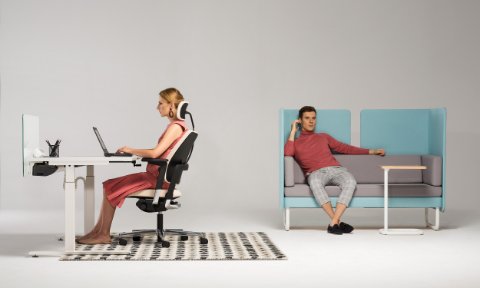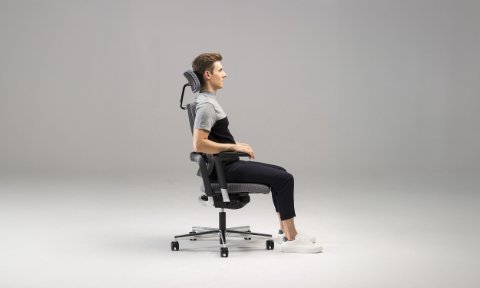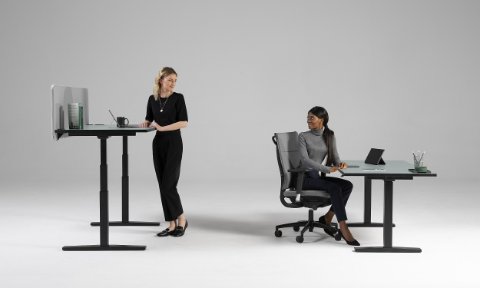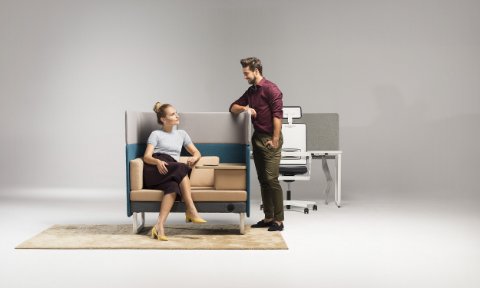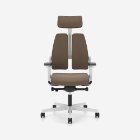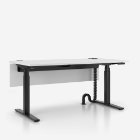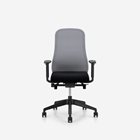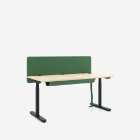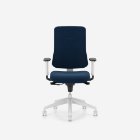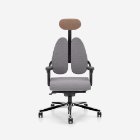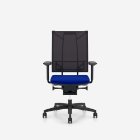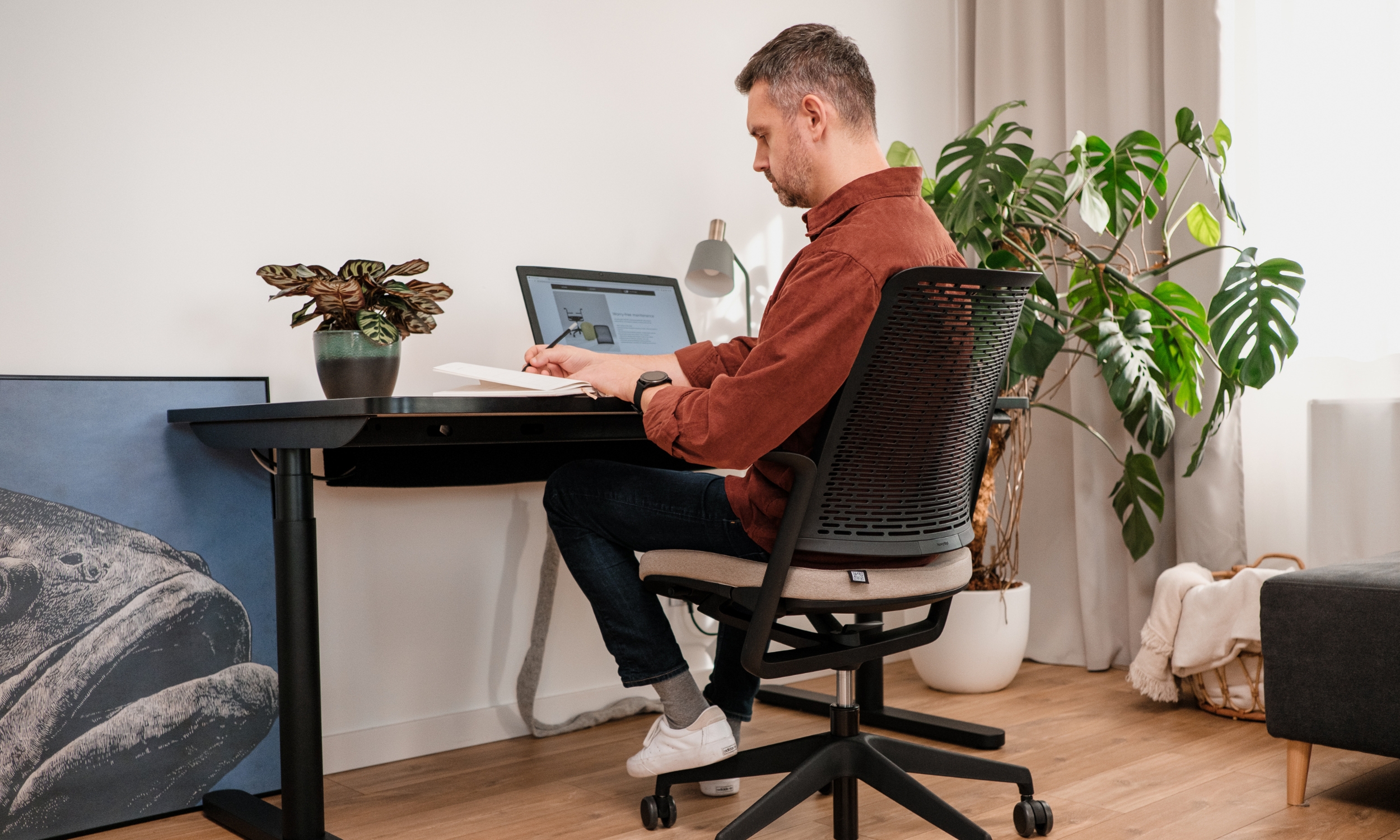Ergonomics
The human body is naturally made for movement
In our everyday routines, we forget about the importance of movement, frequent changes in body posture and proper workplace hygiene. Due to this, we often suffer from long-term pain, deteriorated eyesight, difficulties with concentration or loss of motivation.

Ergonomics comes first: Our involvement in workplace comfort and efficiency
We are a Polish furniture manufacturer, that’s why ergonomics is of double importance to us. First of all, we value the health and comfort of the users of our products. Secondly, the concept of ‘ergonomics’ was introduced by a famous Polish professor Wojciech Jastrzębowski. He was a philosopher, an economist and an engineer, who first perceived ergonomics as a branch of science focused on appropriate workplace design to promote human health and comfort. Our passion for creating functional and comfortable furniture is inspired by the values he stood for.
Non-ergonomic work causes:
-
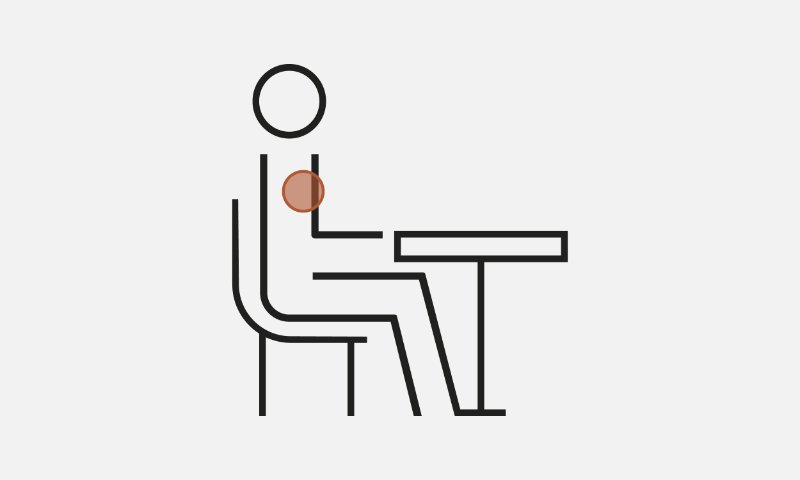 Tension in the shoulders
Tension in the shoulders -
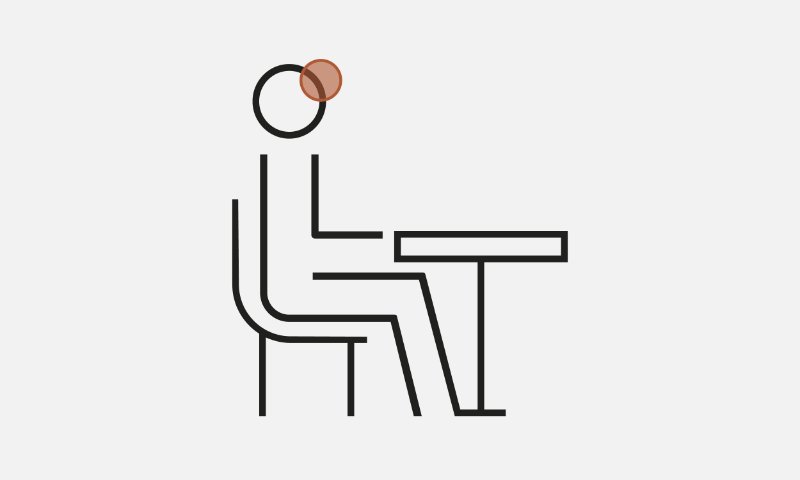 Headache
Headache -
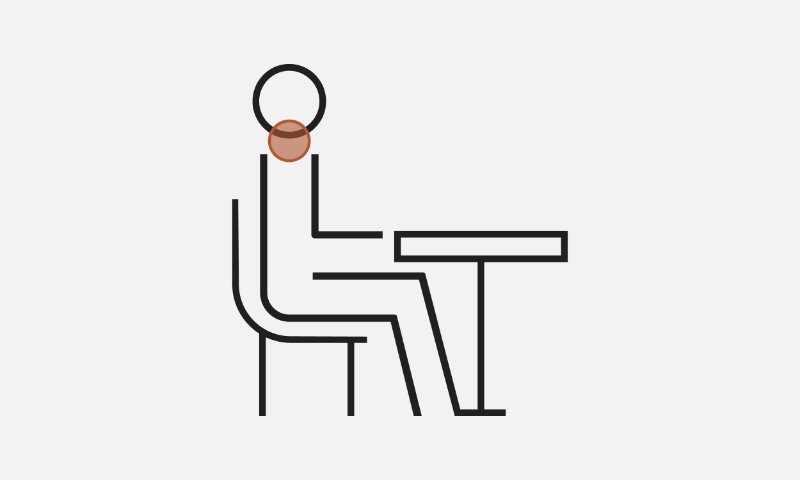 Neck pain
Neck pain -
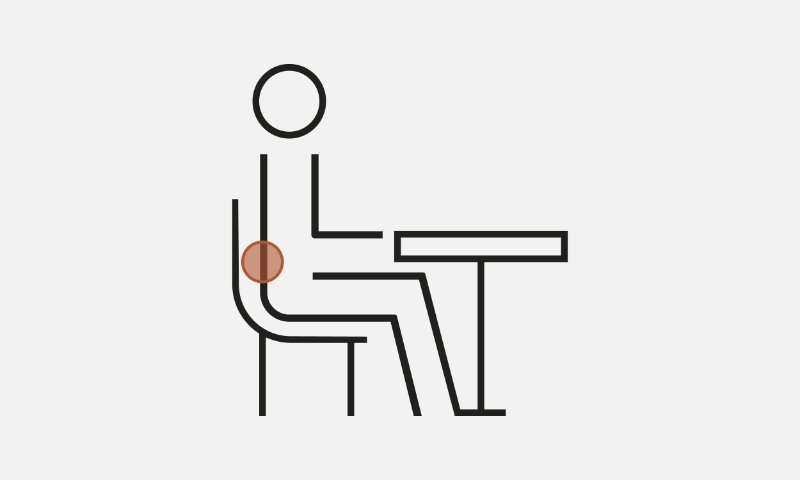 Backache
Backache
Although according to the studies, employees generally describe their condition as good or very good, 79.1% of them experience pain directly related to their work. Most often, it is the pain experienced in their upper body: shoulder blades, shoulders, eyes, neck and lumbar spine.*
* HealthDesk Report (2019)
From pain to comfort: How ergonomics can revolutionise your workplace experience
The solution to the experience of pain at the workplace is ergonomics – the art of designing and placing objects and furniture in a way that promotes efficiency and safety. Introducing relevant rules and solutions (including furniture) helps reduce the discomfort and pain experienced by employees. This, in turn, is reflected in improved well-being and reduced stress levels, which leads to greater efficiency, improved focus and higher productivity.
The best position you can choose for work is... THE NEXT ONE!
-
94%
of employees forget to switch positions while they work -
86%
of employees forget to take short breaks and look away from the screen
-
74%
of employees slouch behind the desk -
77%
of employees sit cross-legged or with their legs folded under the desk
Do you take care of your body while you work? Go through our Check List:
/
Ensure you have appropriate equipment
Make sure you have an ergonomic chair and a desk of proper height. Adjust the parameters of the chair to your body size.
Monitor your body posture
Sit straight, don’t slouch. Keep your feet on the floor or the footrest. Don’t fold or cross your legs. Remember, an improper body position can disturb blood circulation.
Switch your position
Even the best position becomes cumbersome with time. Unlock the backrest to ensure a dynamic sitting position. If you can, combine sitting with standing up while you work.
Make frequent breaks and... keep moving :)
Remember to look away from the screen once in 20 minutes. Look out through the window, preferably at something green. Change your position once in an hour. Find a few minutes for exercise.
3×M: Motion, Movement, Modification
-
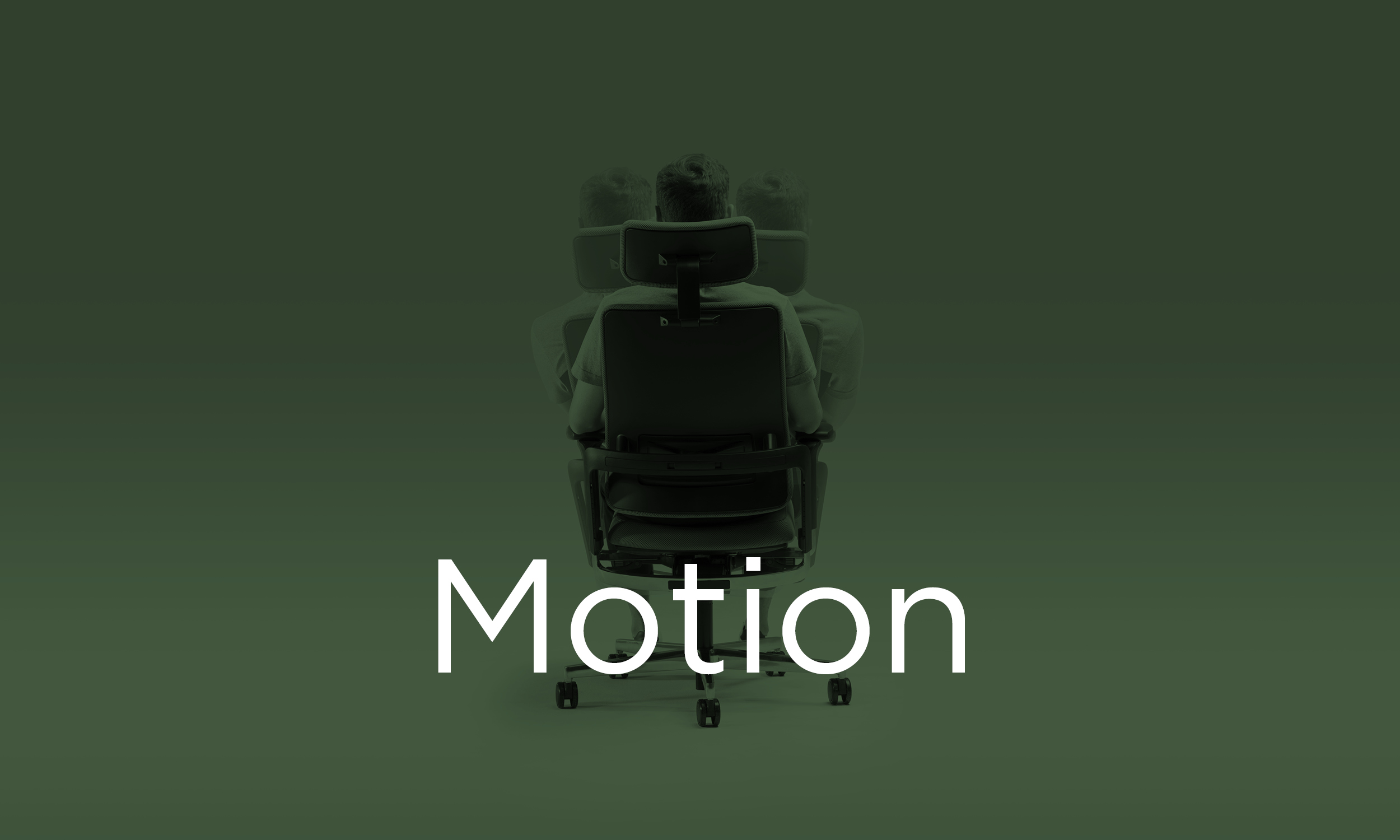 You can do something to boost your health without having to stand up. Exercise behind the desk can boost your ergonomics and reduce the tension in your body. Stretch your neck, arms and wrists, and lift your knees – this is something you can squeeze into your daily workplace routine. Don’t forget to exercise your eyeballs! Look away from the screen, look towards the distance, then look up, down and to the sides.
You can do something to boost your health without having to stand up. Exercise behind the desk can boost your ergonomics and reduce the tension in your body. Stretch your neck, arms and wrists, and lift your knees – this is something you can squeeze into your daily workplace routine. Don’t forget to exercise your eyeballs! Look away from the screen, look towards the distance, then look up, down and to the sides. -
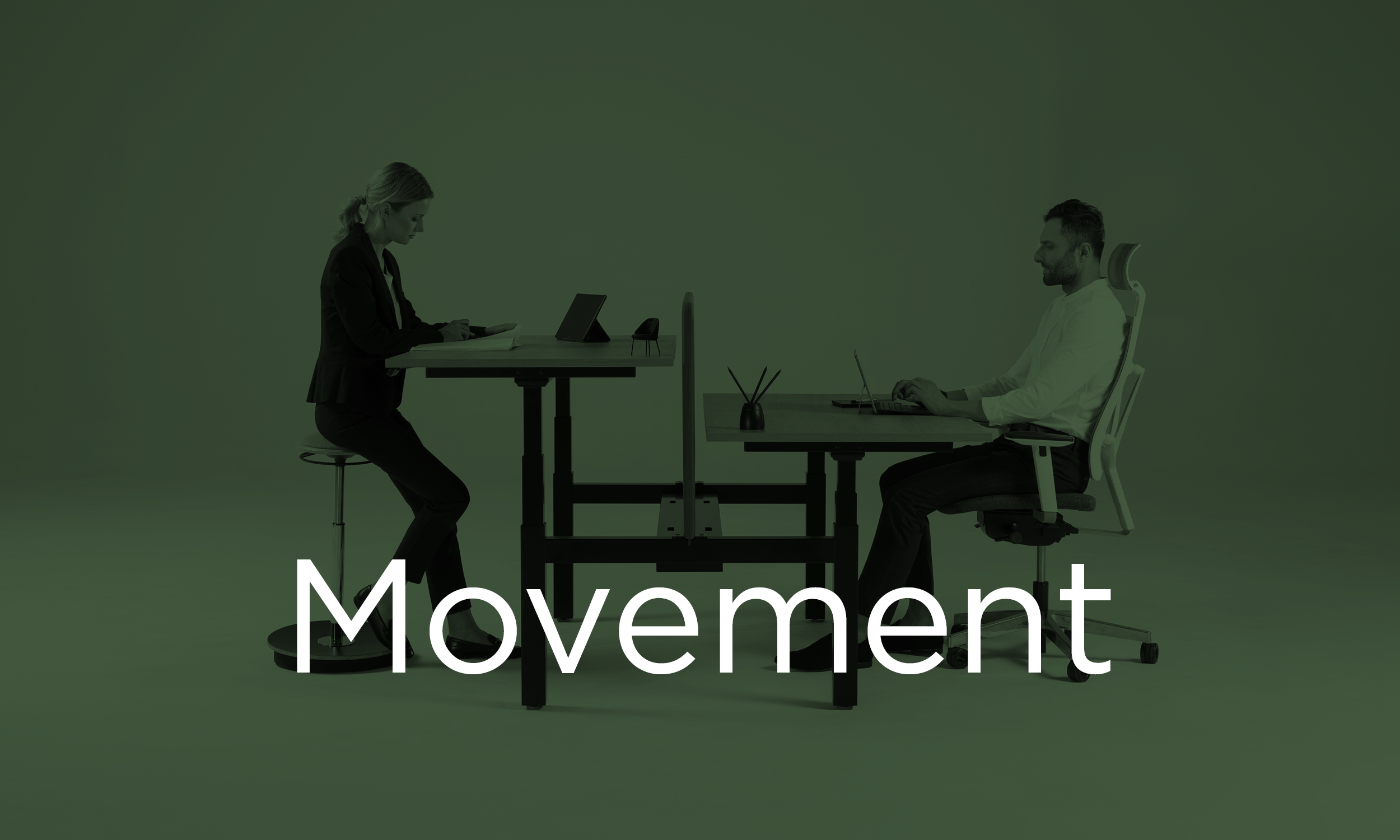 The best body position is the next one: change your position regularly, to boost your wellbeing and protect your spine. Ideally, you should spend 50% of the time in a sitting position, 25% standing up and 25% doing short walks to maintain balance and ensure proper amount of exercise every day.
The best body position is the next one: change your position regularly, to boost your wellbeing and protect your spine. Ideally, you should spend 50% of the time in a sitting position, 25% standing up and 25% doing short walks to maintain balance and ensure proper amount of exercise every day. -
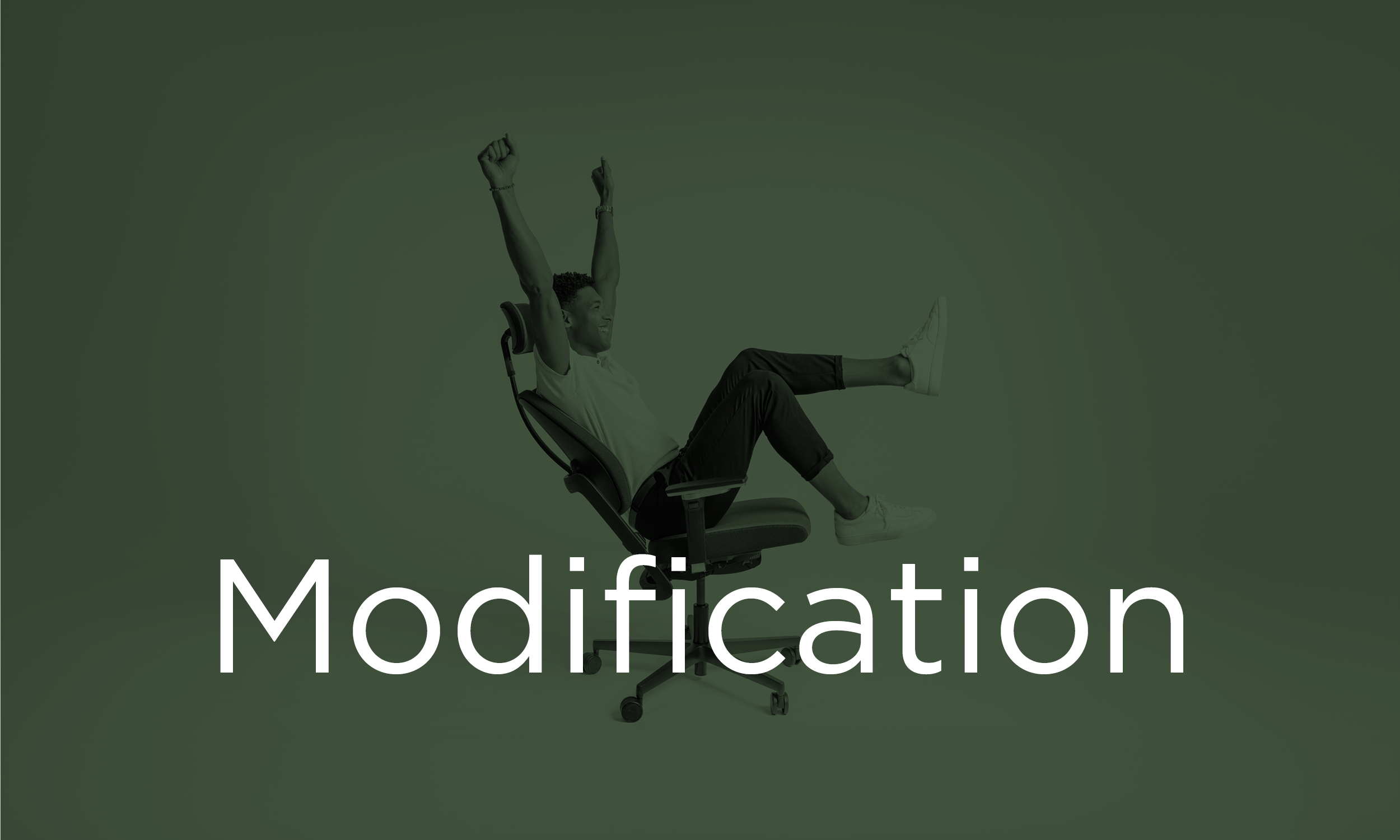 Adjusting furniture solutions to our predispositions and parameters is crucial for maintaining an ergonomic body posture at work. Remember about proper angles, points of support and furniture height to avoid tension, fatigue and injuries.
Adjusting furniture solutions to our predispositions and parameters is crucial for maintaining an ergonomic body posture at work. Remember about proper angles, points of support and furniture height to avoid tension, fatigue and injuries.
Your allies in workplace ergonomics
It all starts with ergonomic furniture...
It’s worth having ergonomic furniture in your office. But this is just the first step. Once you have a proper chair, you should know how to use it to make the most of its potential.
Adjust the seat height
This is the first thing you should do. Adjust the seat to your height. It’s perfect when you can rest your feet flat on the floor without folding them! Your knees should be bent at a straight angle.
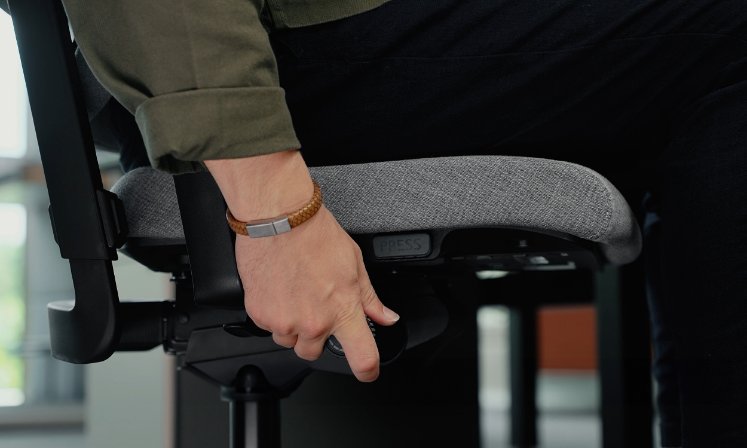
Adjusting the seat depth
Use a relevant button to adjust the distance between the seat and the backrest. The starting position is the one where the seat is pushed inwards as far as possible (towards the backrest). Then you should make sure that the distance between the seat and your legs is about 2 cm (2 fingers). If so, this is the right distance, which helps reduce the pressure of the seat against your legs and enables unrestrained blood and lymph circulation.
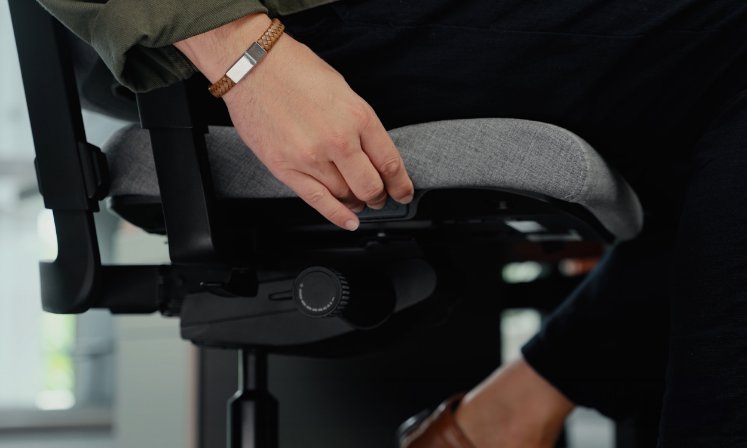
Adjust the backrest height
The backrest height should be adjusted to your height and body posture. A properly adjusted backrest should offer maximum support to your lumbar spine, but it’s best if you can feel the backrest along your spine. No section of your spine should be left unsupported.
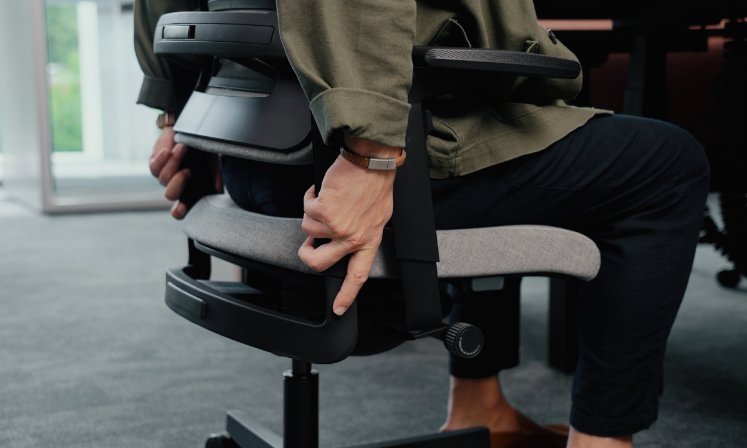
Adjusting armrests
An armrest should be an extension of your desktop. Your elbow and part of your hand should be placed on the armrest, while the other part, including the wrist, should rest on the tabletop. This is to help you avoid tension in your shoulders and ensure a natural body posture. You can also adjust the width of the armrests: remember that your arms should be close to your body.
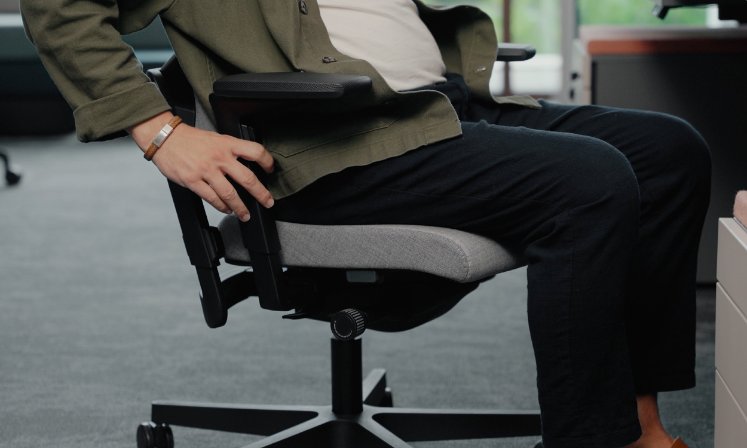
Adjusting the backrest resistance force
Adjusting this parameter can revolutionise your experience in a sitting position. While you press your back against the backrest of your chair, you shouldn’t be lying down (that’s when the resistance force is insufficient), or feel that the backrest is pushing you forward (that’s when the force is excessive). Once you try to tilt backwards, the backrest should slowly return to the initial position together with your back. Use the lever to unlock the backrest to make sure it offers sufficient support to your spine in any position, at all times, while keeping your body in constant motion!
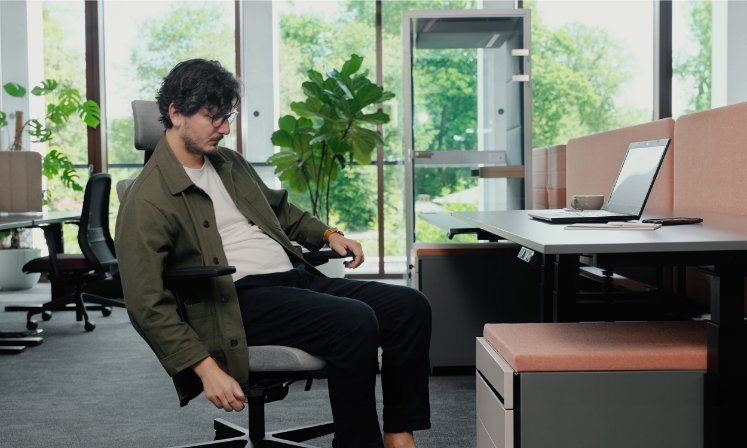
Headrest adjustment
Headrest adjustment – a properly adjusted headrest should support the lower back of your head. While you rest your head, you should feel the support in the neck section of your spine.
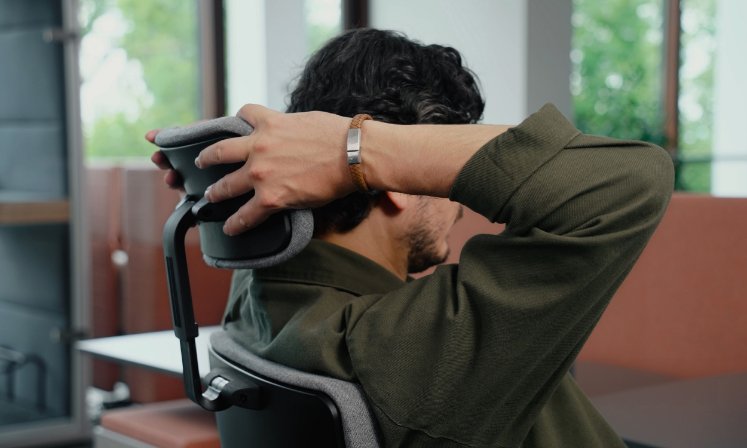
Adjusting the desk height
Adjusting the desk height – make sure your forearms are parallel to the floor and the elbows form a right angle. Proper desk height ensures an optimum body posture and reduces muscle tension, thus improving your comfort and efficiency.
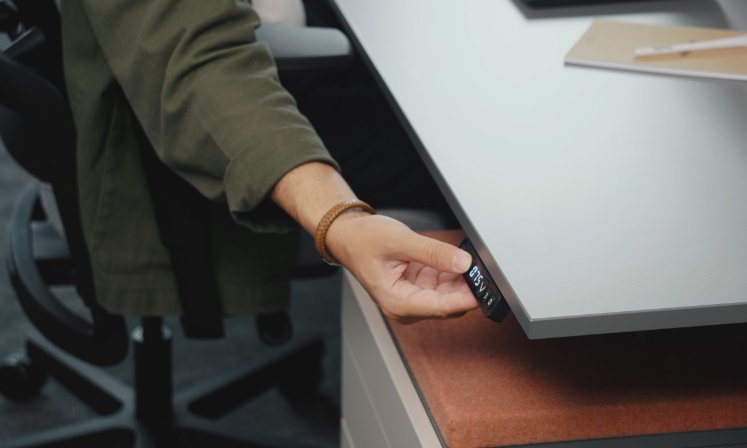
Nowy Styl has been creating ergonomic solutions for more than 30 years now.
We have the experience and knowledge to come up with ergonomic products. That’s why we can support our clients and partners in creating user-friendly workspaces.
How can we help you?
Our experts will happily help you improve workplace ergonomics in your organisation! We offer advice on the methods, analyses and ways of implementing the principles of ergonomics in the workplace. We can also team up with office managers and HR departments to organise dedicated training sessions for your employees so that they can gain more confidence in using our products and make the most of their health-promoting potential.
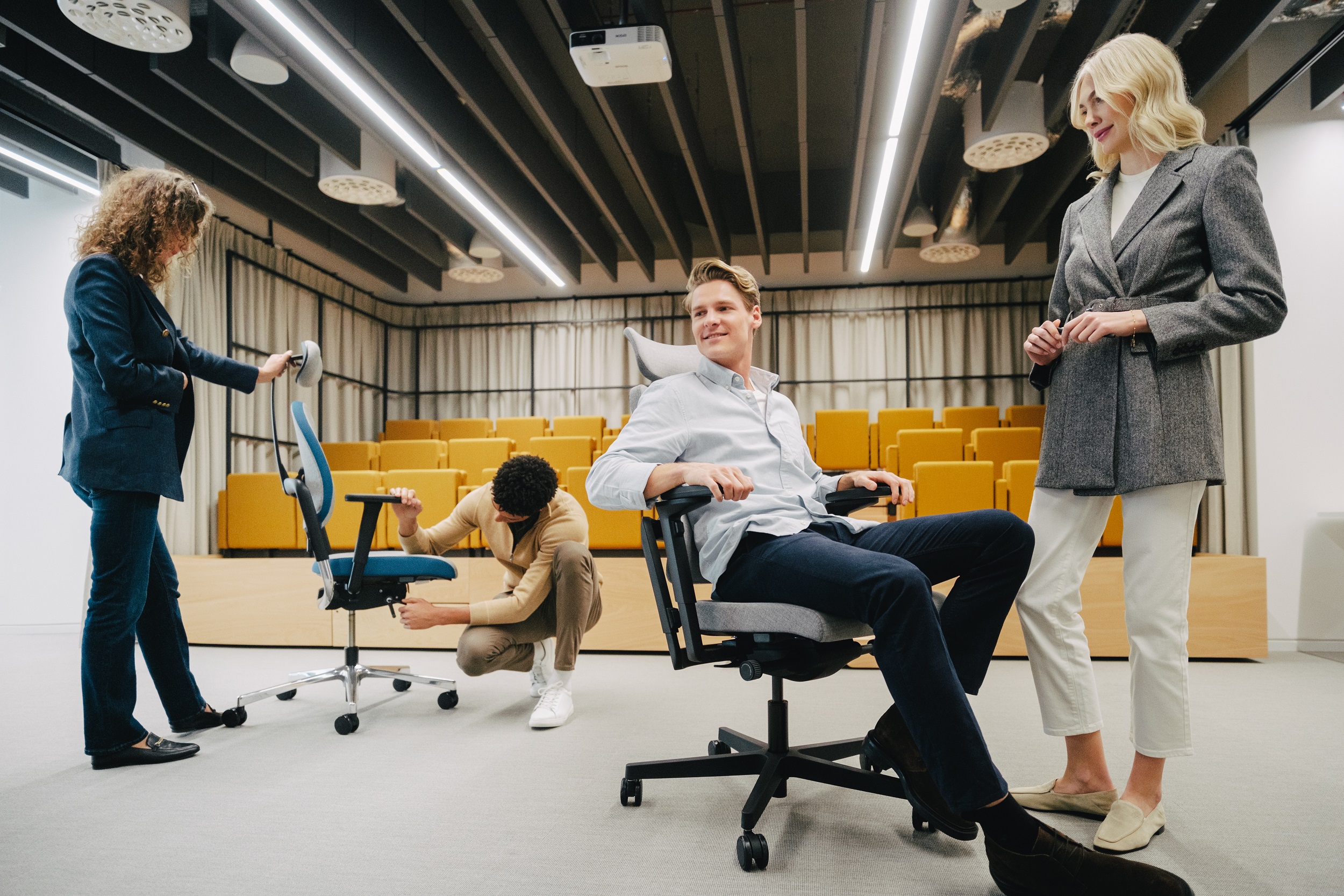
Let's make your health together!
If you would like to learn more about creating the health-promoting work environments, please contact our Experts. We also invite you to follow the ergonomic tips that appear on our website www.nowystyl.com and on our social media.


